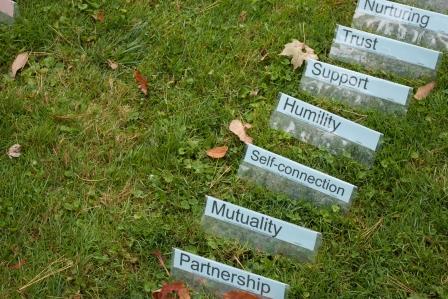
Okay, you’ve done your best to be proactive with yourself and your clients, and even so, sometimes conflicts do arise. Conflicts are not necessarily a problem; they can actually be a way that we take our relationships to another level.
In Part II of this series, we learned some ways to unlock your own point of view, but what about if your client seems entrenched?
An incredibly useful teaching of the Enneagram gives us some perspective on how people can get stuck when trying to resolve conflict. The Enneagram tells us that people generally prefer one of three ways to handle conflicts:
- Emotional Realness (Types 4, 6, 8). If this is your preferred style of handling conflicts, then when the going gets tough, your preference will be to put your cards on the table and invite the other person to do the same. Once we know where each of us stands, we can figure out how to move forward. Makes sense, right? About a third of you should be nodding. The other two-thirds are probably saying, hmmmm, not so sure about that.
- Competency (Types 1, 3, 5). If this is your preferred conflict strategy, then your go-to method of handling disagreements is to turn to the facts. You believe that if you analyze the situation logically then the truth will emerge. That seems so reasonable, right? Maybe…
- Positive Outlook (Types 2, 7, 9). The last preferred conflict strategy is to focus on the positive connections between the parties in conflict. This style aims to highlight the ways in which we want the same thing. So we can all be happy, right? Well….
Not surprisingly, whichever way you naturally prefer will occur to you as the best way to handle conflicts. If your client prefers a different way, then attempts to focus solely on your conflict-resolution preference may escalate the conflict or turn the discussion into a stalemate.
So how does this help you with your entrenched client?
Regardless of what style you or your client habitually gravitates toward, all three approaches are needed to resolve conflicts. People need to understand the facts, each other’s feelings, and also feel as if there is a positive reason to continue working together. If you and your client have different styles, then you need to bring in the third style in order to create the space for resolution. If you and your client have the same style, and you’ve reached the limit of what you can accomplish with just talking about facts, or feelings, or what’s going well, then guess what – you need to bring in both of the other styles!
Don’t just take my word for it – check it out for yourself. You don’t even need to know the other person’s dominant Enneagram type. The next time you feel locked into a conflict, observe what strategies are being used to try to resolve the issue, what’s strategies are missing, and see what happens when you add the missing style(s)!
**********************
Here are some a couple of additional resources to deepen your learning about relationships: